Top 10 Value-For-Money Hondas

Honda's current motorcycle lineup is packed with value
Less than a decade ago, the motorcycle market was experiencing unbridled success. Manufacturers were updating their sportbikes every two years, and the cruiser market was blazing hot with riders who sought personal freedom via riffs on the V-Twin archetype. Motorcycles sold at unprecedented levels, especially to a baby boomer demographic that was absolutely flush with cash, credit, and/or home equity.
Then the Great Recession of 2008 struck a debilitating blow, causing most riders to consolidate their finances and put their dreams of a new bike on hold. Meanwhile, motorcycle manufacturers seemed unsure how to react to the uncertainty. There were three basic strategies:
1. Drastically cut-back on new models, hide their head in the sand and wait, hopefully, for the market to recover. This tact, with some exceptions, was followed by most of the Japanese Big Four.
2. Introduce new models that appealed to the upper end of the moto market, targeting traditional buyers who still retained disposable income that could be spent on luxury items like a motorcycle. Most European manufacturers took this path and achieved market-share growth.
3. Re-prioritize model development to target new riders and value-minded customers who will be critical to reinvigorating the motorcycle market.
Honda chose the latter option, bringing a diverse collection of motorcycles to market, all of which appeal to riders focused on value. Many of these recent models are also targeted at the millennial demographic, to whom big-inch cruisers and expensive sportbikes are far too intimidating and too pricey to consider as as a first bike.
Honda’s lineup now includes 10 streetbikes priced below $8,000, and all of them are easy enough to ride for almost anyone, even newbies. All but one have been introduced since the start of the Great Recession, and two of them are even available with high-tech dual-clutch automatic transmissions that remove the clutch lever from a newbie’s intimidation equation. Most also offer class-leading fuel economy.
To recognize Honda’s efforts at making motorcycles more accessible to a broader market, we’ve put together this list of the 10 street-legal Honda motorcycles we believe offer remarkable value for the money. Turn the pages to find quick-takes on Motorcycle.com’s reviews of each bike, including specifications and our real-world fuel-economy test results. There’s more to a value-for-money equation than just price alone, but we’re listing them here in order of their MSRPs anyway.
Honda Grom
Honda can’t seem to keep enough Groms on dealership floors, and considering its $3,199 price tag, it’s easy to see why. For those in urban environments, college towns, or both, the Grom represents an extremely affordable way to blast through town on a fun and compact motorcycle. Its appeal widens even further when you take into account first-time riders who want to learn the fundamentals of two-wheeling on a motorcycle that isn’t the least bit intimidating.
2014 Honda Grom Review + Video
Powered by a 125cc, fuel-injected, single-cylinder, four-stroke, the Grom comes with all the levers and controls of bigger motorcycles, including both brake levers, a clutch lever and shifter to row through the four gears. An inverted fork, disc brakes and lightweight 10-spoke alloy wheels are features you’d expect to find on a CBR sportbike. It’s targeted towards the youth market, as Grom is in reference to young surfing phenoms, but really, anyone who’s young at heart will appreciate what it has to offer.
The little 125 scoots off the line with enough gusto to keep cagers at bay in the city, although clutch engagements on our test bikes have been rather far out from the grip, and the little thumper doesn’t pick up revs with much urgency. Clearly, this isn’t a bike for speed demons. The Grom is about cruising, exploring escape roads you might have missed on bigger bikes and getting into trouble without ever breaking the speed limit.
History of the Honda Monkey Bike
It handles surprisingly well, with a significant amount of lean angle required before hard parts start touching down. Front travel from the 31mm fork is 3.9 inches, while the shock gives 4.1 inches. For such a little bike, the suspension feels compliant while carrying a 155-pound rider, never bottoming and providing a comfortable ride on SoCal’s crappy roads. Its brakes, too, are more than adequate for tooling around.
The Grom is a fun play bike that’s incredibly easy on the wallet, as its $3,199 MSRP is easy to swallow. After some snooping around our sister site, www.GromForum.com, owners are reporting back fuel mileage numbers easily into the triple digits. One owner claims he got an incredible 165 mpg while gingerly riding during the break-in period! Wherever you go, the Grom attracts attention. And since you meet the nicest people on a Honda, luckily, it comes with passenger pegs, so you can share the adventure.
+ Highs
- More than 100 mpg!
- It’s a motorcycle, not a scooter
- Great to learn on
– Sighs
- Not very quick
- Not freeway legal
- Not for the introverted
Honda Grom Specs | |
|---|---|
| MSRP | $3,199 |
| Engine Capacity | 124.9cc |
| Engine Type | Air-cooled, SOHC, two-valve, Single |
| Bore x Stroke | 52.4mm x 57.9mm |
| Compression | 9.3:1 |
| Fuel System | EFI |
| Transmission | 4-speed |
| Clutch | Wet, multi-plate |
| Final Drive | Chain |
| Frame | Steel |
| Front Suspension | Telescopic, 31mm. fork, 3.9 in. travel |
| Rear Suspension | Single shock, 4.9 in. travel |
| Front Brakes | 220mm disc with two-piston caliper |
| Rear Brakes | 190mm disc with single-piston caliper |
| Front Tire | 120/70-12 |
| Rear Tire | 130/70-12 |
| Seat Height | 29.7 inches |
| Wheelbase | 47.2 inches |
| Curb Weight (claimed) | 225 pounds |
| Fuel Capacity | 1.45 gal |
| Colors | Metallic Black, Pearl Red |
| Warranty | One year, unlimited miles |
Honda PCX150
Whatever else is going on at Honda these days (a lot), you have to admit they’ve got the reliable urban transpo thing down to an art form. And one of our favorites is the PCX150, newly upgraded for 2015 with fresh new bodywork, dual headlights and a bigger gas tank. The PCX slots nicely in between the 541-pound Silver Wing (too big), the Forza (nearly $6000) and the Ruckus and Metropolitan on the other end (50cc scooters are just toooo slow). We haven’t had a chance to ride the upgraded 2015 PCX150 yet, but we’re happy to go out on a limb and bet it’s even better than the previous model – especially since it sells for the same $3,449 as before.
The PCX’s 153cc SOHC two-valve liquid-cooled Single pushes it easily and reasonably quickly up to about 70 mph, which means short freeway blasts aren’t out of the question. For 2015, internal modifications to reduce friction are said to give even better fuel mileage than the 60-70 mpg we recorded from the earlier model. The new fuel tank holds 2.1 gallons – about half a gallon more – which should give the PCX a range of at least 130 miles. That’s a lot of running around between $8 fill-ups.
Meanwhile, a longer-travel 31mm fork serves up 3.9 inches of travel, while the twin-shock rear suspension offers 3.0 inches of wheel travel. When it’s time to whoa it down, a single 220mm disc brake up front and a drum out back are linked via Honda’s Combined Braking System: No ABS is available. A ready-to-ride weight of just 286 pounds (Honda’s claim) makes the PCX not only surprisingly sporty, it also makes it ridiculously easy to wedge in and out of the tightest parking spots and traffic gaps.
New LED headlights, taillights and turn signals are now integrated into the bodywork for a sleeker look, and Honda says the seat is also revised for improved rider and passenger comfort. A new spring-loaded hinge reveals a storage area big enough to hold a full-face helmet – and there’s a glovebox under the dashboard. There’s also a 12V power socket for accessories, and an updated instrument panel including an analog speedometer.
Yours for 2015 in Metallic Black or Pearl White, the new PCX should be in your Honda dealer’s showroom now.
+ Highs
- Fuel injection means instant starts and easy maintenance
- A lot of Honda scooter for $3,449
- Every garage needs a scooter, even if you don’t have a garage
– Sighs
- Black or white is a little dull
- Your “real” motorcycle may feel neglected
- You’ll feel “survivor’s guilt” from getting there and parking so easily
Honda PCX150 Specs | |
|---|---|
| MSRP | $3,449 |
| Engine Capacity | 153cc |
| Engine Type | liquid-cooled SOHC single-cylinder, two valves |
| Bore x Stroke | 58.0mm x 57.9mm |
| Compression | 10.6:1 |
| Fuel System | PGM-FI with automatic enrichment |
| Transmission | Honda V-Matic belt-converter automatic transmission |
| Clutch | Automatic, centrifugal, dry type |
| Final Drive | Belt |
| Frame | Tubular steel underbone |
| Front Suspension | Telescopic 31 mm fork; 3.9 in. travel |
| Rear Suspension | Twin shock, 3.0 inch of travel |
| Front Brakes | 220mm single disc with three-piston caliper |
| Rear Brakes | Drum with CBS |
| Front Tire | 90/90-14 |
| Rear Tire | 100/90-14 |
| Seat Height | 29.9 in. |
| Wheelbase | 51.8 in. |
| Curb Weight (claimed) | 286 lb. |
| Fuel Capacity | 2.1 gal. |
| Colors | Metallic Black, Pearl White |
| Warranty | One year, unlimited miles |
Honda Rebel
If the test of time is what determines a great motorcycle, then the Rebel wins. When Honda built the first one in 1985, David Bowie’s Rebel Rebel was only 11 years old, Bill Clinton was in his second year being Boy Governor of Arkansas, and it was, sniff, “Morning in America” as Ronald Reagan’s second term was beginning. Yamaha’s newly re-introduced SR400 is about seven years older, but when you’re talking continuous production, no other motorcycle for sale in the U.S. has outlasted the Rebel.
That kind of longevity doesn’t just happen, and the reason why the Rebel’s been around for so long is not just because it’s been the go-to motorcycle for new rider training programs forever. It’s also because it’s a seriously good around-town bike: easy to ride, light and low of seat, fast enough, really cheap to keep. Maybe what’s really kept it around is its styling: For $9 more, Honda’s completely modern CBR250R will run rings around the old Rebel in every performance category including fuel economy – but the plastic-covered CBR doesn’t have that classic American cruiser look that the Rebel’s designers got right from the start.
Small people fit the Rebel best, and even the wee-est among us have no trouble throwing a leg over the 26.6-inch seat and being in complete command of the bike’s 331 pounds, including 2.6 gallons of regular. All controls – clutch, shifter, brakes and throttle – are light and typically Honda precise, and all those factors add up to a motorcycle that’s stupid-easy to ride, quick enough for short freeway hauls (top speed’s right around 80 mph), and about as economical as they come – we’ve logged 55-60 mpg numbers during testing with our greedy throttle hands. Casual riding can net fuel economy closer to Honda’s 84-mpg claims.
+ Highs
- Its picture is under “user-friendly” in the dictionary
- Super-low seat and light weight
- Nearly indestructible
– Sighs
- $4,190 is only $9 less than the way modern CBR250R
- Marginal for mixing it up with fast freeway traffic
- Most of the rebellion has been quashed at age 30
Honda Rebel Specs | |
|---|---|
| MSRP | $4,190 |
| Engine Capacity | 234cc |
| Engine Type | Air-cooled SOHC parallel-Twin, two valves per cylinder |
| Bore x Stroke | 53mm x 53mm |
| Compression | 9.2:1 |
| Fuel System | Single 26mm diaphragm-type constant-velocity carburetor |
| Transmission | 5-speed |
| Clutch | Wet, multi-plate |
| Final Drive | Chain |
| Frame | Tubular steel double cradle |
| Front Suspension | Telescopic 33 mm fork; 4.6 in. travel |
| Rear Suspension | Dual shocks with five-position spring-preload adjustability; 2.9 in. travel |
| Front Brakes | Single disc with twin-piston caliper |
| Rear Brakes | Drum |
| Front Tire | 3.00-18 |
| Rear Tire | 160/90-15 |
| Seat Height | 26.6 in. |
| Wheelbase | 57.1 in. |
| Curb Weight (claimed) | 331 lb. |
| Fuel Capacity | 2.6 gal., including 0.7-gal. reserve |
| Colors | Black, Candy Red |
| Warranty | One year, unlimited miles |
Honda CBR250R
Ever since the Honda CBR250R came on the scene, the beginner sportbike war has been hotly contested between it and the Kawasaki Ninja 250/300. While the latest Ninja has a bigger engine and an extra cylinder, the CBR20R has a nicer price. At $4,199, it undercuts the green machine by $800 – a not insignificant amount of change. For just over four large, the Honda provides a sprightly fuel-injected, liquid-cooled 249.6cc single-cylinder engine.
Motorcycle Beginner: 2011 Honda CBR250R Newbie Review
During our time with one, it put out 22.5 hp and 15.2 ft-lbs of torque to the wheel, the latter of which is only three ft-lbs less than the twin-lunged Kawasaki with more displacement. Now that Honda has announced a CBR300R (which sounds cooler than the CBR286R it might’ve been) will be coming to the U.S. in 2015, the performance gap between the two should be closer.
Throwing a leg over the CBR is simple, as the 30.5-inch seat height isn’t too high. For those with short legs, the narrow dimensions of the single-cylinder engine means the legs aren’t spread very far, making flat-footing easy. Honda is known for its refinement, and we found the CBR to be incredibly smooth, even at highway speeds, with little vibration and excellent fuel metering. New riders, which the bike is targeted towards, may not realize it, as they are likely more concerned with mastering the fundamentals, but those positive qualities go a long way towards instilling confidence as skills improve.
2013 Beginner Sportbike Shootout + Video
Those with more experience, like your esteemed MO testers, were also highly impressed with the CBR’s agile handling. At just 357 pounds, and with a tight 53.9-inch wheelbase, carving canyons with the 250 is a blast. Turn-in is achieved with a mere thought, and carrying momentum is the name of the game since power is limited. The single 296mm front disc and 220mm rear stop the bike well enough, but an extra $500 will get you linked ABS. To us, this is a safety feature especially beneficial for new riders.
Of course, a value proposition involves more than just the sticker price, as motorcycles inevitably need fuel to keep going. Honda says the CBR250R returns a whopping 77 miles to the gallon, and during our time with one we were shocked to see our test bike average a mightily impressive 74.4 mpg! It’s cheap to buy, cheap to own, fun to ride and backed by Honda reliability. At the end of the day, it’s hard to go wrong with the CBR250R.
+ Highs
- Affordable
- Great gas mileage
- Fantastic handling
– Sighs
- Least amount of power in the class
- Riders may outgrow it quickly
- Honda just announced the CBR300R
Honda CBR250R Specs | |
|---|---|
| MSRP | $4,199 / $4,599 Repsol edition / $4,699 w/ABS |
| Engine Capacity | 249.6cc |
| Engine Type | Liquid-cooled, SOHC, four-valve, single cylinder |
| Bore x Stroke | 76.0mm x 55.0mm |
| Compression | 10.7:1 |
| Fuel System | EFI |
| Transmission | 6-speed |
| Clutch | Wet, multi-plate |
| Final Drive | Chain |
| Frame | Steel |
| Front Suspension | Telescopic, 37mm fork, 4.65 in. travel |
| Rear Suspension | Single shock, adjustable for spring preload, 4.07 in. travel |
| Front Brakes | 296mm disc with two-piston caliper (three w/ABS) |
| Rear Brakes | 220mm disc with single-piston caliper |
| Front Tire | 110/70R17 |
| Rear Tire | 140/70R17 |
| Seat Height | 30.5 inches |
| Wheelbase | 53.9 inches |
| Curb Weight (claimed) | 357.0 pounds |
| Fuel Capacity | 3.4 gal |
| Colors | Black, Red, Pearl White/Blue/Red, Blue/Orange/White/Red |
| Warranty | NA |
CRF250L
For 2013, Honda replaced the dated CRF230L with the CRF250L. The CRF250L uses a 249cc Single borrowed from the CBR250R streetbike, tuned to provide improved low- and mid-range performance, making it more suitable to the lower-rpm demands of off-road riding. The 250 not only serves as a replacement for the outgoing CRF230L, the 250 will make you forget the 230 ever existed.
The CRF’s off-road footpegs are wide, providing adequate area to rest bulky motocross boots. Its seat is also wide with supple seat-foam density. Unfortunately, the passenger grab strap on the seat is positioned directly beneath the rider’s bum, which makes it an annoyance sooner than later.
The CRF’s non-adjustable suspension is nicely sorted for the intermediate off-road rider to which this bike will most likely be subjected. The 43mm Showa inverted fork provides 9.8 inches of travel, and Honda’s Pro-Link shock gives 9.4 inches; however, neither offers any means of adjustment. The CRF has a semi-double-cradle-type steel frame with a tapered aluminum swingarm, and a seat height of 34.7 inches.
The engine’s low-rev grunt is as noticeable on the street as it is off-road; and has considerable pep for a mild-mannered 250, easily climbing steep sections of trail. The CRF’s internal gear ratios remain unchanged from those in the CBR250R, but lower final gearing is achieved via a 40-tooth rear-wheel sprocket in lieu of the CBR’s 38-tooth sprocket.
The CRF250L is a well-rounded, competent package that represents one of the best values in Honda’s model lineup, as well as in the dual-sport category. Oftentimes, manufacturers will make performance claims that aren’t necessarily attainable, but when it comes to the strong low-end and mid-range power Honda boasts for this dual-purpose 250, you can believe the hype.
+ Highs
- Engine performance
- Easy to maintain
- Goes off road too!
– Sighs
- Seat might be high for short riders
- Non-adjustable suspension
- Chrome fuel cap on a dirtbike?
Honda CRF250L Specs | |
|---|---|
| MSRP | $4,999 |
| Engine Capacity | 249.6cc |
| Engine Type | Liquid-cooled single-cylinder four-stroke |
| Bore x Stroke | 76mm x 55mm |
| Compression | 10.7:1 |
| Fuel System | PGM-FI, 36mm throttle body |
| Transmission | Six-speed |
| Final Drive | Chain |
| Front Suspension | 43mm inverted fork; 8.7 inches travel |
| Rear Suspension | Pro-Link single shock with spring; 9.4 inches travel |
| Front Brakes | Single 256mm disc with twin-piston caliper |
| Rear Brakes | Single 220mm disc |
| Front Tire | 3.00-21 |
| Rear Tire | 120/80-18 |
| Seat Height | 34.7 inches |
| Wheelbase | 56.9 inches |
| Curb Weight (claimed) | 320 pounds |
| Fuel Capacity | 2.0 gallons |
| Colors | Red |
| Warranty | 1 Year |
Honda CB500F/CBR500R
Honda’s 500cc middleweight duo, the naked CB500F and the sporty CBR500R, fill a mid-size displacement gap between smallish 250cc beginner bikes and larger 600cc supersport weapons. Similarly priced at $5,799 and $6,299 for the F and R, respectively, the bikes represent reliable and fun transportation that’s also economical and attractive. Introduced last year, the CB500F and R have struck a chord with the eco-minded younger generation that are also image-aware and price-conscious.
The main difference between the two siblings is the R’s racy fairing and clip-ons vs the F’s more minimal use of plastic bodywork and standard handlebars. The CBR500R and CB500F share the same 471cc parallel-Twin engine with a nearly-square 67 x 66.8mm bore/stroke configuration. The valvetrain incorporates four valves per cylinder actuated by dual overhead camshafts.
Both are suspended by the same Pro-Link single-shock, with nine-step cam-style spring preload adjustability and 4.7 inches of travel. They also share a front suspension with 4.3 inches of travel, and a wheelbase of 55.5 inches. Honda claims 71-mpg rating, which, combined with its 4.1-gallon fuel tank, could yield a range of more than 250 miles. We’re greedier with the throttle, recording mileage from the mid-50s to as much as 63 mpg.
Also shared between the F and R are details such as rear passenger grab handles, halogen headlights and LCD instrumentation with a digital speedometer and tachometer, clock, odometer, tripmeter, and real-time and average fuel consumption meters. ABS is a $500 option on either.
Designed for more than just entry-level riders, the CB500F and CBR500R are full-size motorcycles for riders of all sizes and experience levels. Both motorcycles function dependably, capably, and economically without being overwhelming, and look good while doing it.
+ Highs
- Not too small but not too big
- Your choice of fairing or no fairing
- Cheaper insurance rates compared to full-on supersport models
– Sighs
- Limited cornering clearance
- No gear-position indicator
- ABS is a $500 option
Honda CB500F/CBR500R Specs | |
|---|---|
| MSRP 500F / 500R | $5,799 / $6,299 |
| Engine Capacity | 471cc |
| Engine Type | Liquid-cooled parallel-Twin |
| Bore x Stroke | 67mm x 66.8mm |
| Compression | 10.7:1 |
| Fuel System | PGM-FI with 34mm throttle bodies |
| Transmission | Six-speed |
| Final Drive | O-ring-sealed chain |
| Front Suspension | 41mm fork; 4.3 inches travel |
| Rear Suspension | Pro-Link single shock with nine-position spring preload adjustability; 4.7 inches travel |
| Front Brakes | Twin-piston caliper with single 320mm wave disc |
| Rear Brakes | Single caliper 240mm wave disc |
| Front Tire | 120/70-17 radial |
| Rear Tire | 160/60-17 radial |
| Seat Height | 30.9 inches |
| Wheelbase | 55.5 inches |
| Curb Weight (claimed) | 425 pounds/420 pounds |
| Fuel Capacity | 4.1 gallons |
| Colors | Black, Pearl White/Blue/Red, Red |
| Warranty | One Year |
CB500X
The CB500X is the third model in Honda’s 500cc parallel-Twin triumvirate. With stealthy styling and matte-black bodywork, the CB500X positions itself as an Adventure-Touring model compared to the sportier intentions of its brothers.
Sharing the majority of components with the CBR500R and CB500F, the differences between the X and its F and R siblings are a one-inch taller seat height (31.9 inches vs 30.9 inches), a fuel tank with an extra 0.4 gallon of fuel (4.5 gal. vs 4.1 gal), and the highest claimed curb weight: X = 430 lbs., R = 425 lbs., F = 420 lbs.
For a motorcycle with a smallish displacement of 471cc, the CB500X attracts newer to intermediate riders because the 500X feels more substantial than its engine capacity suggests. The bike’s neutral seating position beckons all-day rides, and the fuel-sipping quality of the diminutive Twin provides an estimated 71-mpg rating to grant that request with financial frugality. Under our greedy wrists, the X returned mpg numbers in the high 50s.
Slowing the bike is a single 320mm wave front disc and a single twin-piston caliper up front, while at the rear sits a 240mm wave disc and single-piston caliper. The stopping power is far from phenomenal but adequately sufficient. ABS adds $500 to the bike’s MSRP and, in our opinion, the upgrade is worth the price for the increased safety factor. In the handling department, the X is surprisingly competent if not excellent. The front end is neutral but willingly turns into slow, tight corners as well as faster sweepers with equal aplomb.
Seat foam isn’t as compliant as we’d like for spending consecutive hours aboard the 500X, but there are aftermarket ways to amend this inconvenience. The CB500X is a versatile motorcycle retailing for the same price of its CBR500R sibling ($6,299). At this price the 500X is an incredibly affordable motorcycle for riders of varying sizes and skill levels.
+ Highs
- Adjustable windscreen
- Small bike with a big-bike feel
- Comfortable for long rides
– Sighs
- ABS is additional $500
- Digital instrument cluster hard to read in direct sunlight
- Shock adjustment tool not included
Honda CB500X Specs | |
|---|---|
| MSRP | $6,299 |
| Engine Capacity | 471cc |
| Engine Type | Liquid-cooled parallel-twin |
| Bore x Stroke | 67mm x 66.8mm |
| Compression | 10.7:1 |
| Fuel System | PGM-FI with 34mm throttle bodies |
| Transmission | Six-speed |
| Final Drive | O-ring-sealed chain |
| Front Suspension | 41mm fork; 5.5 inches travel |
| Rear Suspension | Pro-Link single shock with nine-position spring preload adjustability; 4.7 inches travel |
| Front Brakes | Twin-piston caliper with single 320mm wave disc |
| Rear Brakes | Single caliper 240mm wave disc/ |
| Front Tire | 120/70-17 radial |
| Rear Tire | 60/60-17 radial |
| Seat Height | 31.9 inches |
| Wheelbase | 55.9 inches |
| Curb Weight (claimed) | 430 pounds |
| Fuel Capacity | 4.5 gallons |
| Colors | Pearl White |
| Warranty | One Year |
Honda CTX700N
Is Honda’s CTX700N a cruiser without chrome and leather or a standard with a cruiser’s seat height and riding position? We don’t know, but Big Red’s idea of attracting new riders, who may not fit into motorcycling’s usual tribes, to the sport seems like a good idea. The equation is a simple one: Take a friendly 670cc parallel-Twin, put it in a smart-looking chassis with a low seat height, make it easy/fun to ride, and give it a $6,999 base price. Who cares if the bike doesn’t fit in traditional categories?
With a low, 28.3-in. seat height, the CTX700N makes it easy for even the shortest riders to flat foot both boots at a stop. The feet forward, cruiser-style riding position puts the rider’s upper body in an upright position perfect for viewing the road ahead. The pulled-back handlebar places the grips where the rider’s hands would naturally fall. While the seat feels perfect for shorter riders, taller ones may find that its shape prevents the pilot from sliding back far enough for long-distance comfort.
The cylinders’ 62-degree forward tilt means there is plenty of room for the 3.17-gallon tank to ride low in the frame above the engine, which aids Honda’s long-standing mass-centralization goals. The resulting low center of gravity (CG) means that, even at a standstill, the CTX feels much lighter than its claimed weight of 478 lbs. would suggest. At speed, the low CG translates into neutral but responsive steering, allowing the CTX to turn in or change lines without any fuss. Ground clearance is above average for a bike with similarly mounted pegs. Low-speed, parking-lot maneuvers are handled with aplomb.
The CTX’s linked brakes shorten the learning curve of new or returning riders, but as they progress in their skills, riders will appreciate the decent power provided by the 320mm front and 240mm rear discs.
The parallel-Twin’s low- to mid-range torque combine with an easy to modulate clutch, making pulling into traffic a no-stress affair. Shifting gears – both up and down – is remarkably slick for a budget-priced motorcycle. While the CTX wasn’t designed to win any races, it can easily best the traffic typically found in city riding. While the CTX’s delivery of smiles per hour is off the charts, the gas range is more than reasonable. With a thrifty 57.3 mpg, riders can expect to get around 180 miles out of a tankful.
With this much motorcycling competence for just $6999, the CTX700N tips the value meter in a very positive way. For riders who want a little more help when riding, Honda offers a Dual Clutch Transmission (DCT) with included ABS for $1000 extra. When you consider that the DCT removes intimidating clutch work from the equation and allows the CTX to do all of the mundane shifting for you (while still allowing for manual shifting when desired), the upgrade price seems like even more of a bargain on top of the already budget-conscious MSRP.
While the CTX700N may not fit into the traditional cruiser or standard categories, it certainly excels in the amiability and fun factors. Honda may be on to something by bending traditional styling and giving a low entry price in an effort to convert folks from being motorcycle-curious into full-fledged riders – which is a good thing for motorcycling’s future.
+ Highs
- Surprisingly good handling
- Torquey engine
- High value for the dollar
– Sighs
- Seat can be cramped for larger riders
- Polarizing styling
- ABS only available with DCT
Honda CTX700N Specs | |
|---|---|
| MSRP | $6,999 |
| Engine Capacity | 670cc |
| Engine Type | Liquid-cooled, SOHC parallel-twin, 4 valves per cylinder |
| Bore x Stroke | 73mm x 80mm |
| Compression | 10.7:1 |
| Fuel System | PGM-FI with 36mm throttle body |
| Transmission | 6-speed |
| Clutch | Wet, multi-plate |
| Final Drive | Chain |
| Frame | Steel |
| Front Suspension | Telescopic, 41mm fork, 4.2 in. travel |
| Rear Suspension | Pro-Link single shock, 4.3 in. travel, ramped preload adjusmtent |
| Front Brakes | Single 320mm disc with two-piston caliper |
| Rear Brakes | Single 240mm disc with single-piston caliper |
| Front Tire | 120/70-17 |
| Rear Tire | 160/60-17 |
| Seat Height | 28.3 in. |
| Wheelbase | 60.2 in. |
| Curb Weight (claimed) | 478 lb. |
| Fuel Capacity | 3.17 gal. |
| Colors | Candy Red, Black |
| Warranty | One year, unlimited miles |
Honda Shadow Phantom
Honda’s Shadow line of cruisers has been around since 1983 and has featured models displacing as much as 1100cc, but now the Shadow line consists of just four 745cc V-Twin motorcycles. Priced at only $10 per cc, all four models start from the same basic chassis and engine before being outfit with various combinations of wheels and bodywork designed to appeal to different cruiser riders. For this test, we decided to go over to the Dark Side with the Shadow Phantom, which embraces the blacked-out theme trending these days. Its MSRP was reduced from $8,240 for 2014 to match its Shadow brothers.
2010 Honda Shadow Phantom Review
A single glance at the Phantom tells us that value-priced motorcycles can be stylish. In this case, Honda started with a muscular profile joining the spoked wheels and the fat 120/90-17 front tire to the 160/80-15 rear. Bobbed fenders and a gunfighter seat give it a purposeful look, accented by bodywork in either gloss black or a metallic gray. The front end was given some visual weight by slipping some covers over the stanchions of the 34-degree raked fork. With the exception of the chrome exhaust, gas cap, and spokes, give the rest of the bike a satin black finish – including the 52-degree V-Twin engine. When it’s all put together, the dark profile looks much more menacing than expected from a “mere” 750.
Sitting on a gunfighter saddle that is just 25.8 in. off the ground, pilots of average height will find the riding position is comfortably compact. The pegs are forward but not overly so, and the grips find a nice middle ground between a narrow drag-style bar and a wider beach bar. The slight forward lean puts the rider in a good position for resisting the wind blast at highway speeds. Riders over six feet, however, may find the riding position too tight.
The Shadow’s loping engine cadence at idle delivers the popular V-Twin pulse. Around town, the easy to modulate clutch and willing engine make quick work of the stoplight-to-stoplight shuffle. While the engine has the power to cruise on the interstate, riders will most likely find themselves looking for a sixth gear (there isn’t one) once the speedometer reads above 65 mph. The vibration isn’t obtrusive, but the engine feels busy at those speeds, making an additional cog in the transmission desirable, particularly if you plan on riding the 200 miles its 54 mpg and 3.7-gal. tank are capable of carrying you.
The view from the saddle is reminiscent of bigger, pricier cruisers, with the blackout treatment adding to the bike’s perceived value. Wrapping your fingers around the fat grips to initiate turns, the Phantom has a substantial feel. The 120/90–17 in. front tire no doubt contributes to this impression. The steering never feels heavy. Rather, the Shadow’s presence feels closer to that of a Big Twin than a 750. Adding to this big bike feel is its relatively firm suspension, which, in most situations, works quite well. However, sharp-edged bumps make it cross from firm to harsh, transmitting some of the impact to the rider’s hind parts.
The choice of a shaft drive instead of the chain final drive reduces maintenance and adds to the full-sized appearance of the Phantom. Its 64.6-in. wheelbase (only 2.5 in. shorter than the Gold Wing Valkyrie muscle cruiser!) confirms this impression.
Honda has created a value-priced 750 with full-sized appeal – all while keeping the rider triangle manageable for smaller riders. Since there are three other identically priced Shadows to choose from, odds are you’ll find one to suit your tastes. Still, we find it hard to fault Honda’s visual treatment of the Phantom’s art of darkness.
+ Highs
- Big bike feel
- 25.8 in. seat height for shorter riders
- Blacked out styling
– Sighs
- No sixth gear
- Suspension harsh at times
- 25.8 in. seat height cramps taller riders
Honda Shadow Phantom Specs | |
|---|---|
| MSRP | $7,499 |
| Engine Capacity | 745cc |
| Engine Type | Liquid-cooled, 52 degree V-Twin, three valves per cylinder |
| Bore x Stroke | 79mm x 76mm |
| Compression | 9.6:1 |
| Fuel System | PGM-FI with 34mm throttle body |
| Transmission | 5-speed |
| Clutch | Wet, multi-plate |
| Final Drive | Shaft |
| Frame | Steel tubular backbone |
| Front Suspension | Telescopic, 41mm fork; 4.6 in. travel |
| Rear Suspension | Dual shocks with five-position spring-preload adjustability; 3.5 in. travel |
| Front Brakes | Single 296mm disc with twin-piston caliper |
| Rear Brakes | Drum |
| Front Tire | 120/90-17 |
| Rear Tire | 160/80-15 |
| Seat Height | 25.8 in. |
| Wheelbase | 64.6 in. |
| Curb Weight (claimed) | 549 lb. |
| Fuel Capacity | 3.7 gal., including 0.9-gal. reserve |
| Colors | Black, Gray Metallic |
| Warranty | One year, unlimited miles |
Honda NC700X
Short for “New Concept,” the Honda NC700X is a utilitarian motorcycle forging a unique path in this landscape. Speed isn’t its main focus. Instead, being the one bike capable of many things is where its value lies. Its narrow profile makes it capable of slicing through traffic, and its 670cc parallel-Twin engine has enough grunt to easily outpace cars trying to jockey for position on the road. The on-board storage compartment proves especially nice if you need to make a small grocery run. Fit the optional luggage (saddlebags and top case), and you almost have enough room for a trip to Costco! Conveniently, at $7,799, the NC700X won’t break the bank, allowing you to splurge at the aforementioned bargain warehouse on 83 rolls of toilet paper.
2012 Honda NC700X Review + Video
The NC stands out in a few ways, as its undersquare engine (73.0mm bore x 80.0mm stroke) is situated in the frame almost horizontally. Since the 3.7 gallons of fuel are stationed under the seat, all that room above the engine frees up 21 liters for storage. The punchy little engine may not win many drag races, as our test bike put down only 47.7 hp, but its 42.6 ft-lb of torque at only 4,700 rpm is more than capable of hauling you and a passenger to places unknown. The NC is incredibly miserly on gas, too. The worst mileage we could muster with our heavy right wrists still tickled 50 mpg. When not being thrashed, we could get 10 miles a gallon better. Our best effort to save gas almost returned a whopping 80 miles to the gallon!
Befitting its New Concept name, the NC harkens back to the days of the Universal Japanese Motorcycle. Its upright seating position places you in a comfortable stance to not only go to work during the week, but to escape the 9-to-5 on the weekends. Plus, with its long(ish)-travel suspension, some mild off-roading is entirely possible as well. A negative result of the generous suspension travel is a relatively tall 32.7-inch seat height, which, combined with a slightly broader mid-section, can be a stretch for short legs. On the plus side, the NC easily accommodates taller riders.
Honda NC700X vs. Kawasaki Versys + Video
While we’re on the topic of suspension, the budget-spec components used here are part of the reason for the low price tag. Despite this, both ends still provide a comfortable ride at the expense of true sporting composure. A single 320mm front disc and twin-piston caliper is partnered with a 240mm rear disc and single-piston caliper. Braking performance is fine for a 427-pound motorcycle in most situations, especially if both ends are applied at the same time.
For the rider with only enough cash (or room) for one bike, give the NC700X a good look. It lives for the daily grind or a vacation full of long, flowing roads. From a value perspective, the NC700X really is a do-it-all motorcycle at a reasonable price. If using your foot to shift is a bit too cumbersome for you, an extra $1000 will get the Dual-Clutch Transmission option, which allows for true push-button shifting and not bothering with a clutch lever, plus it includes ABS.
+ Highs
- Incredible fuel mileage
- 21-liter storage compartment is really handy
- The Universal Japanese Motorcycle is back
– Sighs
- Engine runs out of steam fairly quickly
- Seat height may put off shorter riders
- ABS only available with DCT
Honda NC700X Specs | |
|---|---|
| MSRP | $7,799 / $8,799 w/DCT and ABS |
| Engine Capacity | 670.0cc |
| Engine Type | Liquid-cooled, SOHC, four-valve, parallel-Twin |
| Bore x Stroke | 73.0mm x 80.0mm |
| Compression | 10.7:1 |
| Fuel System | EFI |
| Transmission | 6-speed |
| Clutch | Wet, multi-plate |
| Final Drive | Chain |
| Frame | Steel |
| Front Suspension | Telescopic, 41mm. fork, 5.4 in. travel |
| Rear Suspension | Single shock, 5.9 in. travel |
| Front Brakes | 320mm disc with two-piston caliper |
| Rear Brakes | 240mm disc with single-piston caliper |
| Front Tire | 120/70ZR17 |
| Rear Tire | 160/60ZR17 |
| Seat Height | 32.7 inches |
| Wheelbase | 47.2 inches |
| Curb Weight (claimed) | 472.0 pounds |
| Fuel Capacity | 3.7 gal |
| Colors | Black, Red |
| Warranty | Transferable, unlimited-mileage limited warranty; extended coverage available with a Honda Protection Plan. |

Motorcycle.com presents an unrivaled combination of bike reviews and news written by industry experts
More by Motorcycle.com Staff



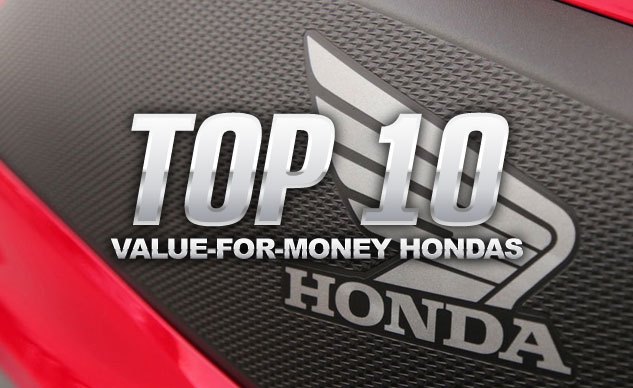





























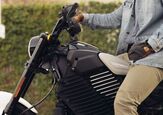
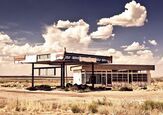
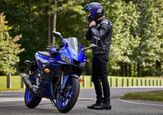
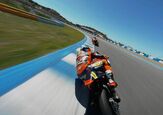
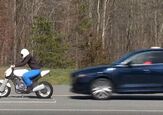
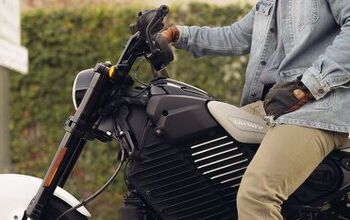
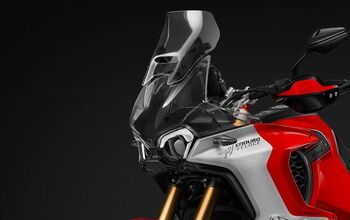
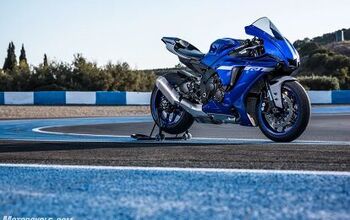
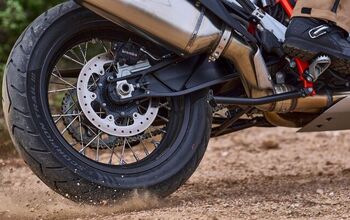
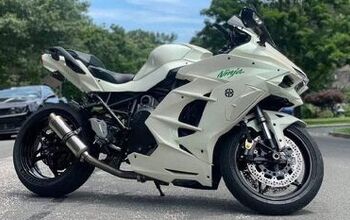



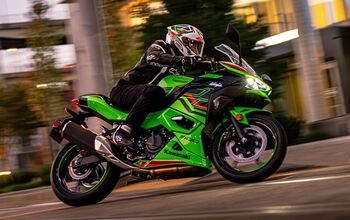
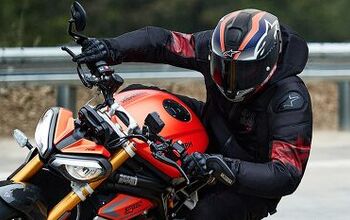
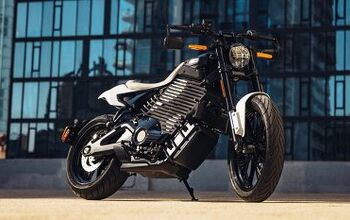
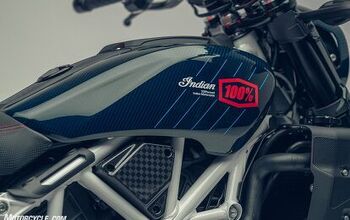
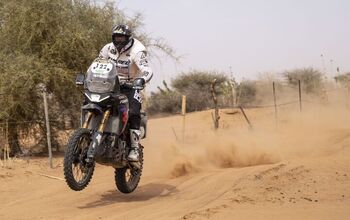
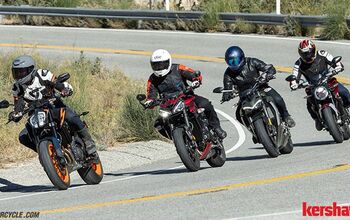
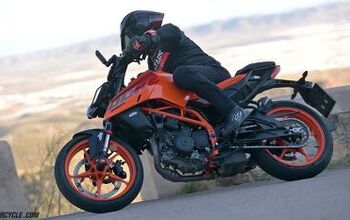
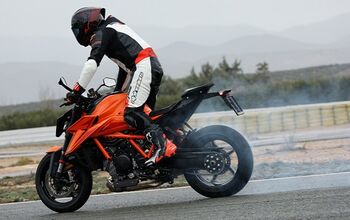
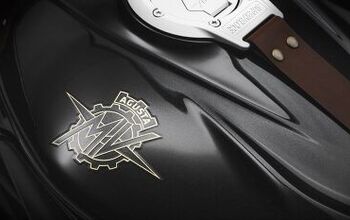
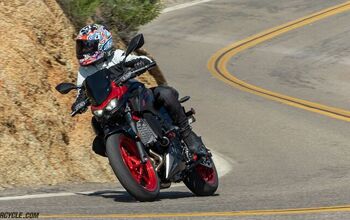
Comments
Join the conversation
purchased CTX700n w/ABS-DCT. having a blast on this scoot. pal w/ the street glide always wants to take mine for a spin. I enjoy riding his cycle, but prefer my little Honda. slow speed handling is superlative, and it can snap my head back as I roll on the throttle. get a lot of compliments on the cool look and ergonomic seating. big Red is dominant force w/awesome motorcycles. I am a fan...
Best value hondas were in the early ninties when you could get a honda nt 650 gt hawk ridicilouly cheap after it bombed in the sale room.Had one,and am kicking myself still for selling it.